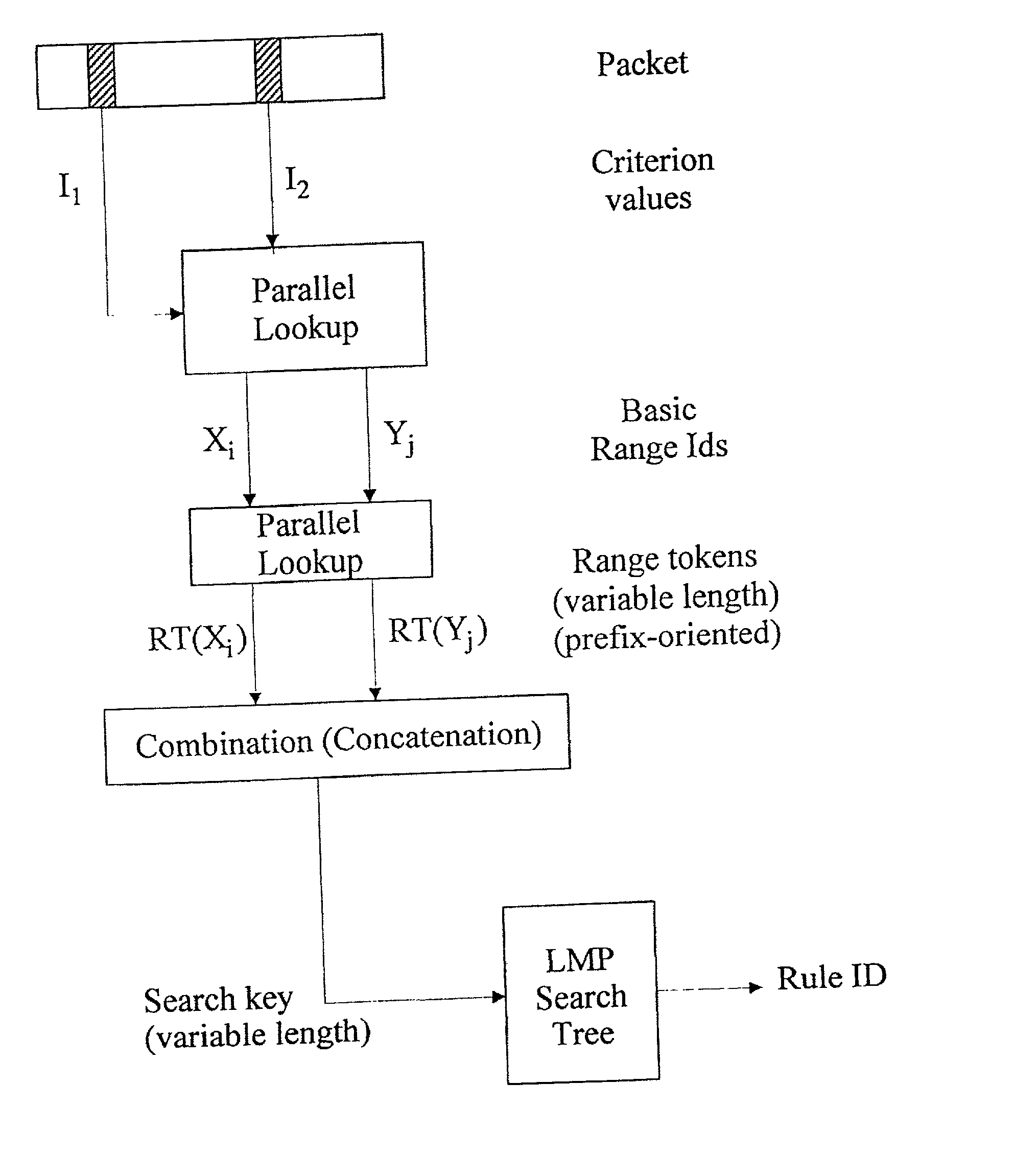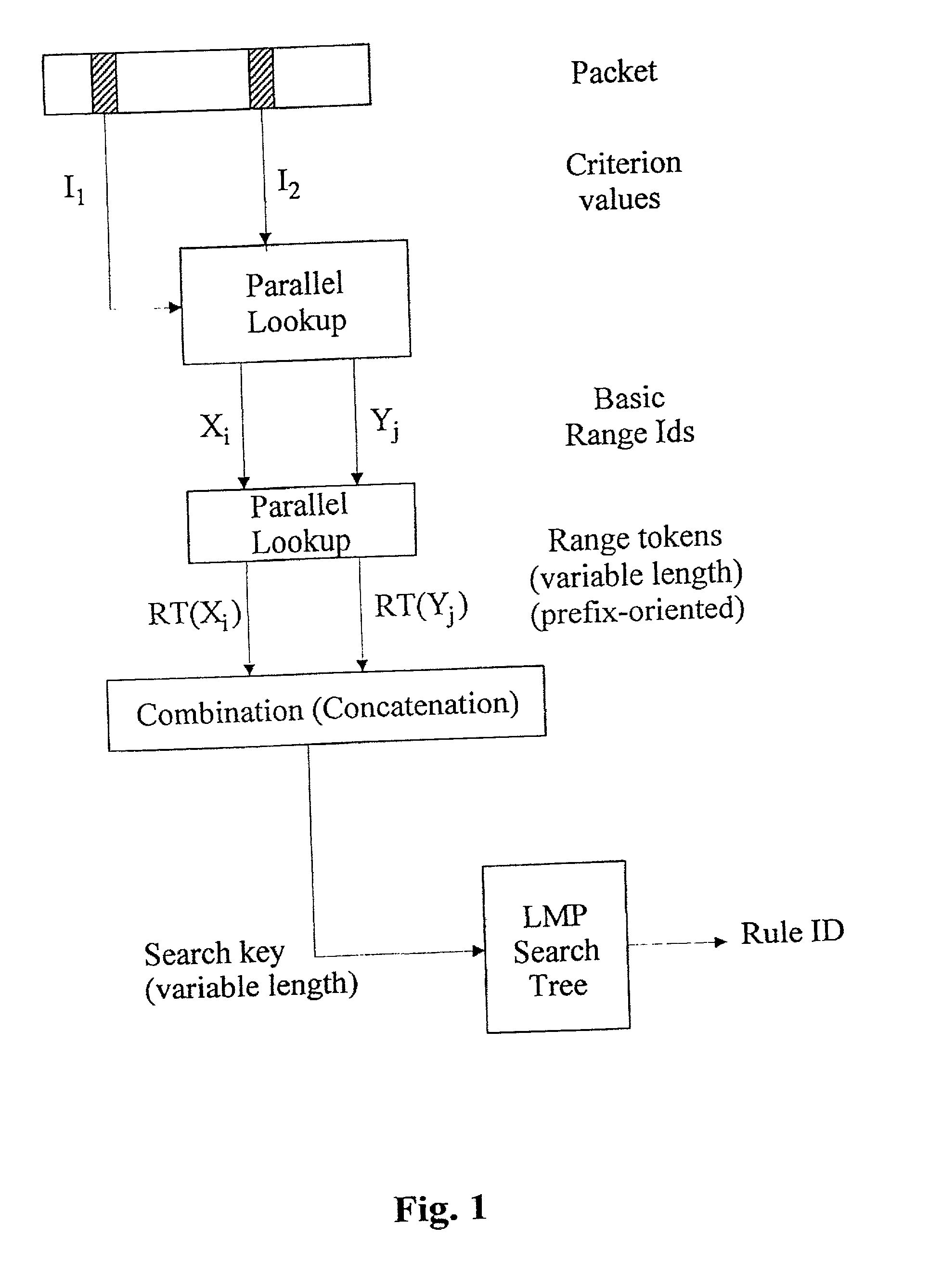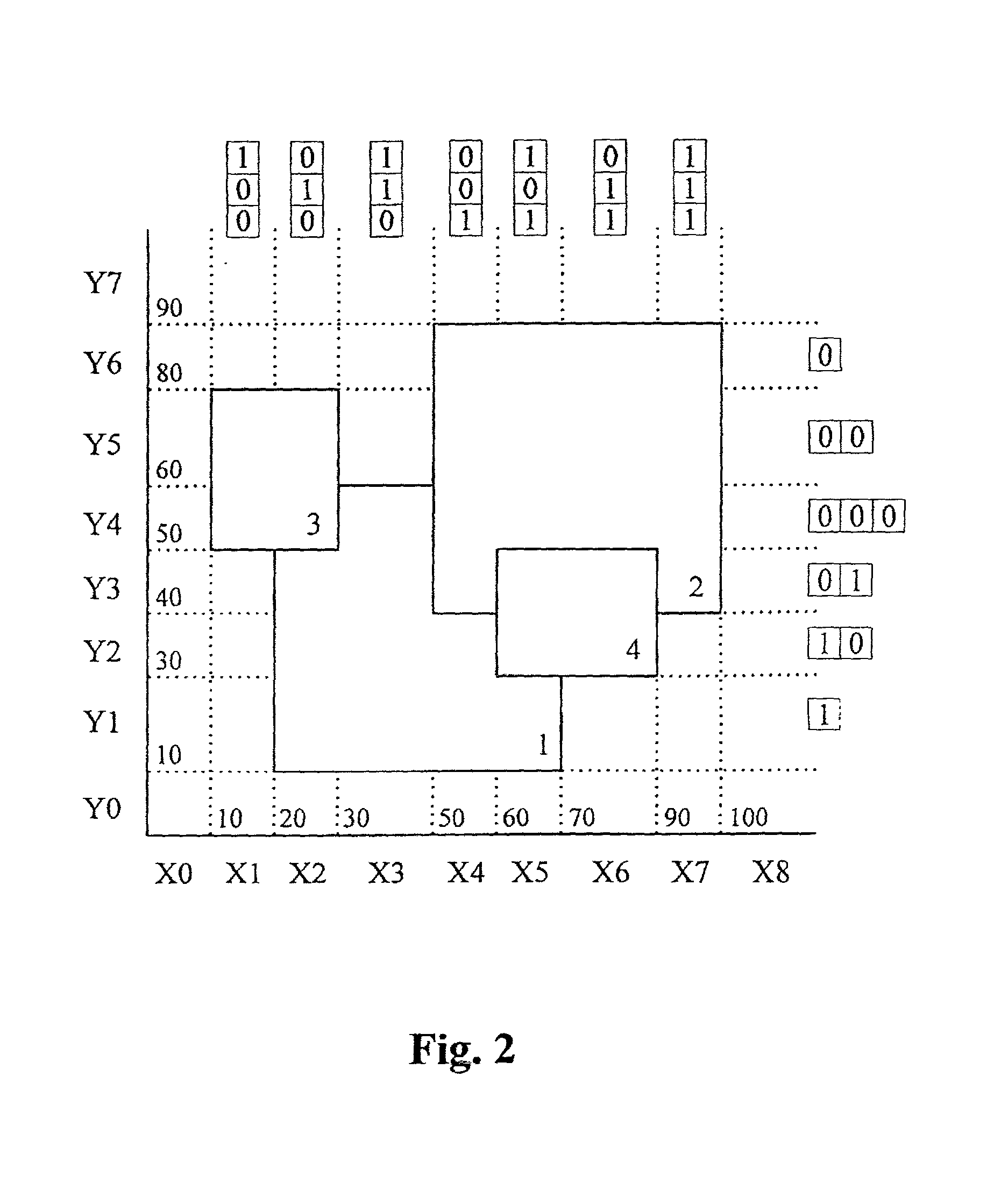Method and means for classifying data packets
a data packet and data technology, applied in the field of method and means for classifying data packets, to achieve the effect of reducing the required size of storage, efficient lookup, and fast and simple adaptation of search
- Summary
- Abstract
- Description
- Claims
- Application Information
AI Technical Summary
Benefits of technology
Problems solved by technology
Method used
Image
Examples
example 2
[0063] In this second example the same four rules are assumed that were used in the first example and which were illustrated in FIG. 2.
[0064] Variable-length range tokens
[0065] In this example variable-length range tokens will be assigned to the basic ranges in both the X and Y dimensions. This in contrast to the first example, in which variable-length range tokens are assigned to the basic ranges in the Y dimension only.
[0066] When variable-length range tokens are used in two (or more) dimensions, an even better optimization of the classification procedure is possible at least for certain relations between rules and ranges. This can be seen from the resulting list of rule prefixes at the end of the description of this example, and from the resulting search tree in FIG. 8.
[0067] One way to assign variable-length range tokens to basic ranges in both dimensions involves two steps as are shown in FIG. 6.
[0068] The first step is to split the existing rules into so called subrules such t...
PUM
 Login to View More
Login to View More Abstract
Description
Claims
Application Information
 Login to View More
Login to View More - R&D
- Intellectual Property
- Life Sciences
- Materials
- Tech Scout
- Unparalleled Data Quality
- Higher Quality Content
- 60% Fewer Hallucinations
Browse by: Latest US Patents, China's latest patents, Technical Efficacy Thesaurus, Application Domain, Technology Topic, Popular Technical Reports.
© 2025 PatSnap. All rights reserved.Legal|Privacy policy|Modern Slavery Act Transparency Statement|Sitemap|About US| Contact US: help@patsnap.com



